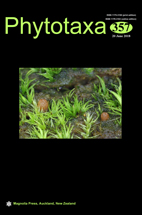Abstract
Distimake rhynchorhiza is an enigmatic Indian species considered rare and endangered, particularly concerning for occurring in the Western Ghats biodiversity hotspot. It has been rarely collected since it was described in 1851 and very few taxonomic works since then seem to mention it. A targeted effort was done to locate this rare species and gather more information about it. We present in this study a full taxonomic account, with nomenclatural correction of its epithet, and lectotypification. The fruit and seeds are documented for the first time. The distribution range is increased and its morphology and ecology better characterized, as well as illustrated with colour photographs from a recent collection. We conclude that the species is widely distributed across Western India, and not a narrow endemic as initially thought; we also propose its conservation status to be lowered from Endangered to Vulnerable given the new data available. Morphologically, it presents an uncanny resemblance to some Central and South American species of Distimake; being the only species that is endemic to India within an otherwise more South American and African diverse genus raises several questions about the taxonomy, biogeography and evolution of Distimake as a genus. This study brings attention to a species that has been mostly overlooked, and provides a foundation for molecular, biogeographic and evolutionary studies in the genus, as well as a modest contribution to the knowledge of the biodiversity in the Western Ghats.

